Some Scottish Foods for your Thanksgiving Feastby Tom Doran November is known in the USA primarily for its Thanksgiving Day Holiday, and its major feast of the day. The day before Thanksgiving is the most traveled day of the entire year, and indeed it seems like the whole nation is on the move to visit family and close friends. And as is the norm, Turkey is the main item made for the meal. But, let's have a change of pace and seeing how this is a Scottish-American newspaper, lets go in a slightly different direction. Perhaps you might want to celebrate by eating what may be seen as purely Scottish fare. Many Scots helped found the American nation, so it's appropriate I feel. So, with that in mind, lets start Thanksgiving day with what is a modern-ish, typical (possibly mildly stereotypical) Scottish breakfast. That usually means eggs, bacon, beans, tomatoes and mushrooms – with Lorne Sausage and Black Pudding thrown in. Add a potato scone, a pot of tea and one is set for the day. 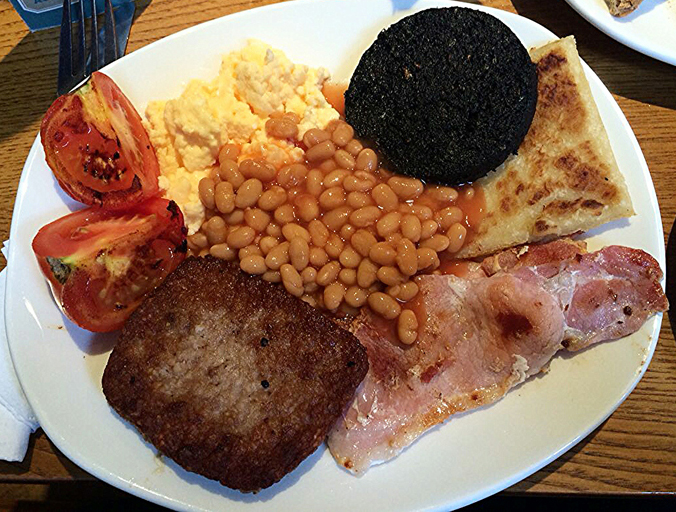
You could also start instead with good steel-cut oatmeal or (rolled) porridge oats. Eaten with cream and syrup (or sweetener of some kind). This has been a staple of Scottish culture and cuisine for centuries. If we go back into recorded Highland history, we'll also discover that a dram of the “water of life” was often imbibed upon rising as a fuel to start the day off right. 
Okay, so we've had our breakfast and that should hold most of us for a good long while– but the day is long and you are looking for something to nosh on. Nothing big or heavy, as we wait for our main meal – so how about Scotch Woodcock -– very popular during the Victorian era, it was essentially buttered toast, covered with Gentleman's Relish (an anchovy-based spread), then topped with fluffy scrambled eggs, and topped again with anchovy fillets. 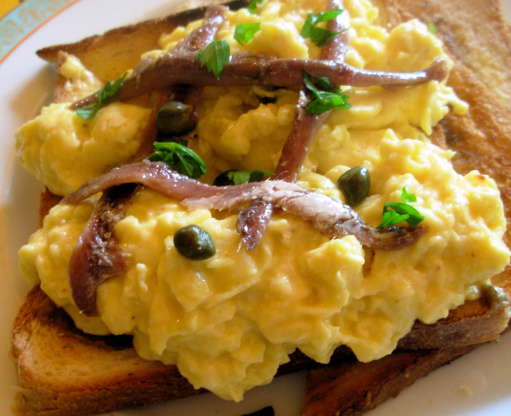
A Scotch egg could be eaten as well if really hungry, as this is considered a kind of snack and not really a breakfast food. The egg with sausage covering notwithstanding. 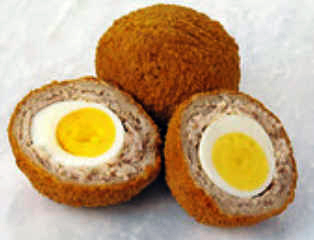
A Scotch pie would go good for a noon-day meal – consumed often and with a passion (often at football matches, or a late-night snack after a night at the “local.” You can find them even in the US from a few shops and of a very good quality (though seldom made with mutton). Bridies are also worth a try as well – usually consumed as a snack (Bridies are similar to a Cornish Pastie). 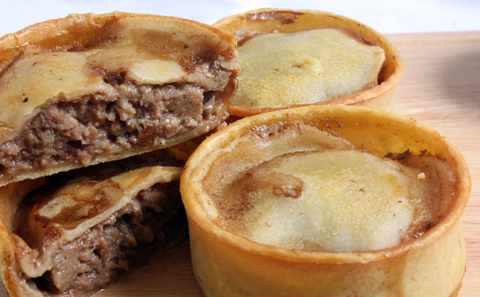 Scotch Pie 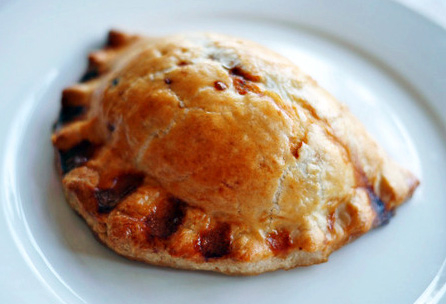 Bridie You might want to wash that down with a non-alcoholic drink, such as the biggest soft-drink in Scotland – Irn Bru (Iron Brew), which outsells Coke. It's a copper-colored beverage with a taste that really is difficult to describe. 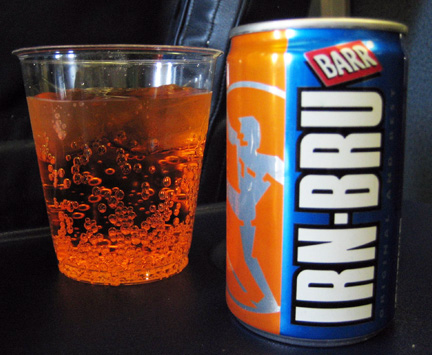 Irn Bru Okay, time for our main meal – a good starter can be a traditional soup dish called Cock a Leekie. A chicken based soup, garnished with prunes (really). 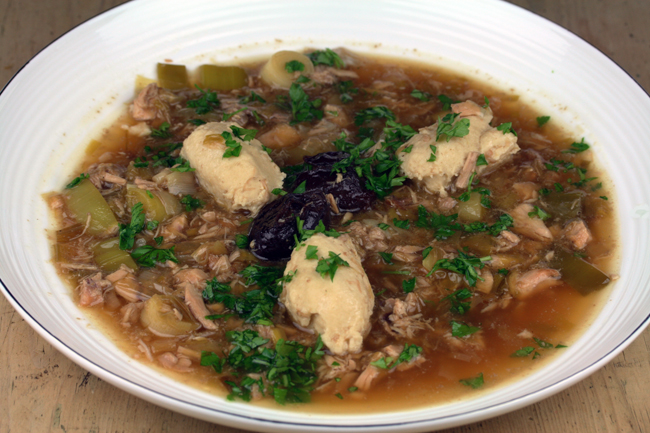 cock a leekie soup Haggis is going to be our main meal – our substitute turkey. As Prof. Beatty, head honcho of this publication has pointed out, that the most American of foods – the turkey – is really only eaten once a year. Perhaps twice – and I have to agree. Most birds are bred big and meant for large family gatherings with friends and relatives on Thanksgiving and sometimes Christmas. The birds are often too big for a normal everyday kind of meal, even a Sunday meal, where one might have the time to tend to a bird that literally takes hours to cook. It just isn't on our radar as a common meal. If it wasn't for the perceived history of our Thanksgiving dinner we'd probably be having some burgers. In Scotland, haggis is common. There's been some talk from non-Scots, about how the Scots don't actually eat haggis (except on Burns Night), but that's completely ridiculous. While it's not a daily meal for the most part, it is available in all butcher shops, as well as canned; it's available in pubs and restaurants; in every chip shop, you can get your haggis supper as well as fish and chips. There's even a TV-style frozen dinner of Haggis with neeps and tatties (mashed turnips and potatoes). Want some haggis-flavored crisps? You can buy them. It's generally not a special occasion food by any means, where a good roast, or ham, or something else would be presented as a main meal – but for us here in America, Haggis seldom rears it's head outside of Burns Night in special restaurants. Some restaurants do serve it in America (In New York there are at least two that serve it year round). 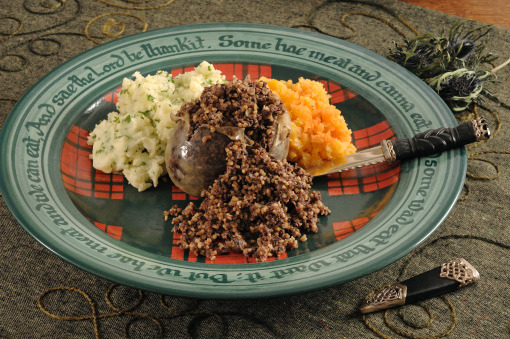 haggis Since it is still banned from being imported in the USA (the US Government does not like the lungs portion apparently), we have to make do with a home-made version, which is readily available. It's nae bad (as they say). 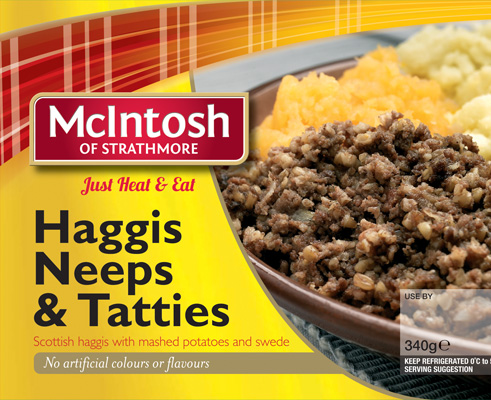 haggis tv dinner With it? Neeps and Tatties of course, though some like it with Colcannon (primarily an Irish dish, it is mashed potatoes and kale or cabbage all mixed up). You can have some side nibblies of Scottish cheeses as well. Serve them on oatcakes as a dessert (cheeses are often served as a finale to a meal). Crowdie and Caboc are two good choices – soft, spreadable and often come rolled in oatmeal. 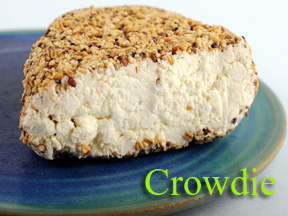 crowdie Better yet for those with a sweet-tooth, indulge in some Cranachan. Again, the Scots have found a way to incorporate a truly historic and national food of the nation – oatmeal. Froth up some heavy cream, sugar, raspberries (a soft fruit for which Scotland is famous), mix in toasted pin-head oatmeal and you a nice way to end your holiday meal. Slainte. 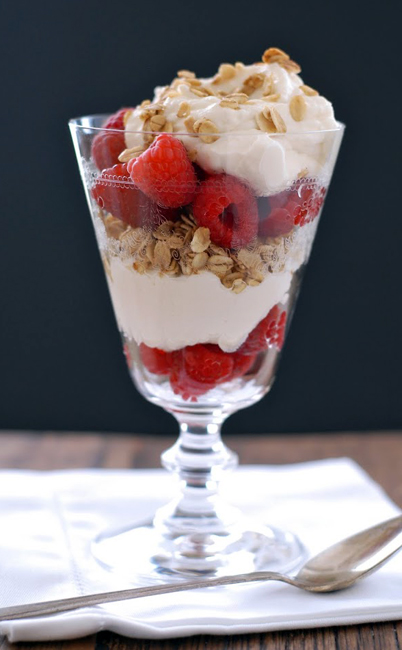 Cranachan |